Salmonella Type 3 Secretion System
Salmonella type 3 secretion system. Key Laboratory of Chemical Biology Ministry of Education School of Pharmaceutical Sciences Shandong. Notti and Stebbins 2016. The system is controlled by three AraC-like regulators HilD HilC and RtsA which form a complex feed-forward loop to activate expression of hilA encoding the main transcriptional regulator of T3SS structural genes.
These proteins manipulate host signal transduction pathways and cellular processes to the pathogens advantage. Enterica serovar Dublin ΔhilA mutant lacking a key transcriptional activator of SPI-1 entered and survived within A. Salmonella pathogenicity island 1 SPI1 encodes a type III secretion system that is required for virulence during the intestinal phase of infection.
This bacterial type III secretion system T3SS is of special interest to those studying host-pathogen interactions because by utilizing this system bacteria are able to directly inject bacterial proteins called effectors into host cells across bacterial and host membranes where they can manipulate host cell function. The expression of SPI1 genes is controlled by many global regulatory pathways that affect the expressionactivity of transcriptional regulators encoded on SPI1. High Quality Antibody used for Enzyme-linked Immunosorbent Assay IFA IHC IP and RIA.
Salmonella infects intestinal epithelial cells using a type 3 secretion system T3SS encoded on Salmonella pathogenicity island 1 SPI1. Type Three Secretion Systems T3SS are nanomachine complexes which display the ability to inject effector proteins directly into host cells. Type III secretions systems T3SSs are found in a large number of Gram-negative bacterial pathogens and symbionts reviewed in.
During the course of an infection many Gram-negative pathogens including Shigella Salmonella enteropathogenic Escherichia coli and Yersinia species use type III secretion systems T3SSs as injection devices to deliver multiple virulence proteins referred to as effectors directly into the cytosol of infected cells. Type Three Secretion Systems T3SS are nanomachine complexes which display the ability to inject effector proteins directly into host cells. This skill allows for gram-negative bacteria to modulate several host cell responses such as cytoskeleton rearrangement signal transduction and cytokine production which in turn increase the pathogenicity of these bacteria.
A transmission electron-microscope image of isolated T3SS needle complexes from Salmonella typhimurium. Hence a thorough study of the type three secretion system T3SS of Salmonella would help us better understand its role in bacterial pathogenesis and development of anti-virulence agents. STm mutants lacking the type-3 secretion system-1 induce less neutrophil ROS than the virulent WT.
The Type III Secretion System. Type III secretion systems are molecular machines used by many Gram-negative bacterial pathogens to inject proteins known as effectors directly into eukaryotic host cells.
T3SSs have been described as injectisomes and needle and syringe-like apparatuses because of their structure see Fig.
This skill allows for gram-negative bacteria to modulate several host cell responses such as cytoskeleton rearrangement signal transduction and cytokine production which in turn increase the. Enterica serovar Dublin ΔhilA mutant lacking a key transcriptional activator of SPI-1 entered and survived within A. The expression of SPI1 genes is controlled by many global regulatory pathways that affect the expressionactivity of transcriptional regulators encoded on SPI1. This bacterial type III secretion system T3SS is of special interest to those studying host-pathogen interactions because by utilizing this system bacteria are able to directly inject bacterial proteins called effectors into host cells across bacterial and host membranes where they can manipulate host cell function. In addition we demonstrate that flagellar motility is a significant agonist of the neutrophil respiratory burst. This TTSS secretes a set of SPI2-encoded proteins in vitro and translocates Salmonellaserovar Typhimurium translocated. The type III secretion system T3SS is an interspecies protein transport machine that plays a major role in interactions of Gram-negative bacteria with animals and plants by delivering bacterial effector proteins into host cells. These proteins manipulate host signal transduction pathways and cellular processes to the pathogens advantage. However T3SS can be inhibited by different chemicals at different stages of infection and sequenced delivery of effectors can be blocked to restrict the progression of disease.
Type III secretion systems are molecular machines used by many Gram-negative bacterial pathogens to inject proteins known as effectors directly into eukaryotic host cells. Notti and Stebbins 2016. Salmonella invades non-phagocytic intestinal epithelial cells using the type-3 secretion system-1 TTSS encoded on Salmonella Pathogenicity Island-1 SPI-1. Together our data demonstrate that both the type-3 secretion system-1 and flagellar motility which are established virulence factors in enteric salmonellosis also appear to directly influence the magnitude. Enterica serovar Dublin ΔhilA mutant lacking a key transcriptional activator of SPI-1 entered and survived within A. Three type III secretion system T3SS inhibitors compounds 5 19 and 32 were identified by virtual screening and biological evaluation. Abortus equi and their minimum inhibitory concentrations ranged from 1 to 53 μgml.
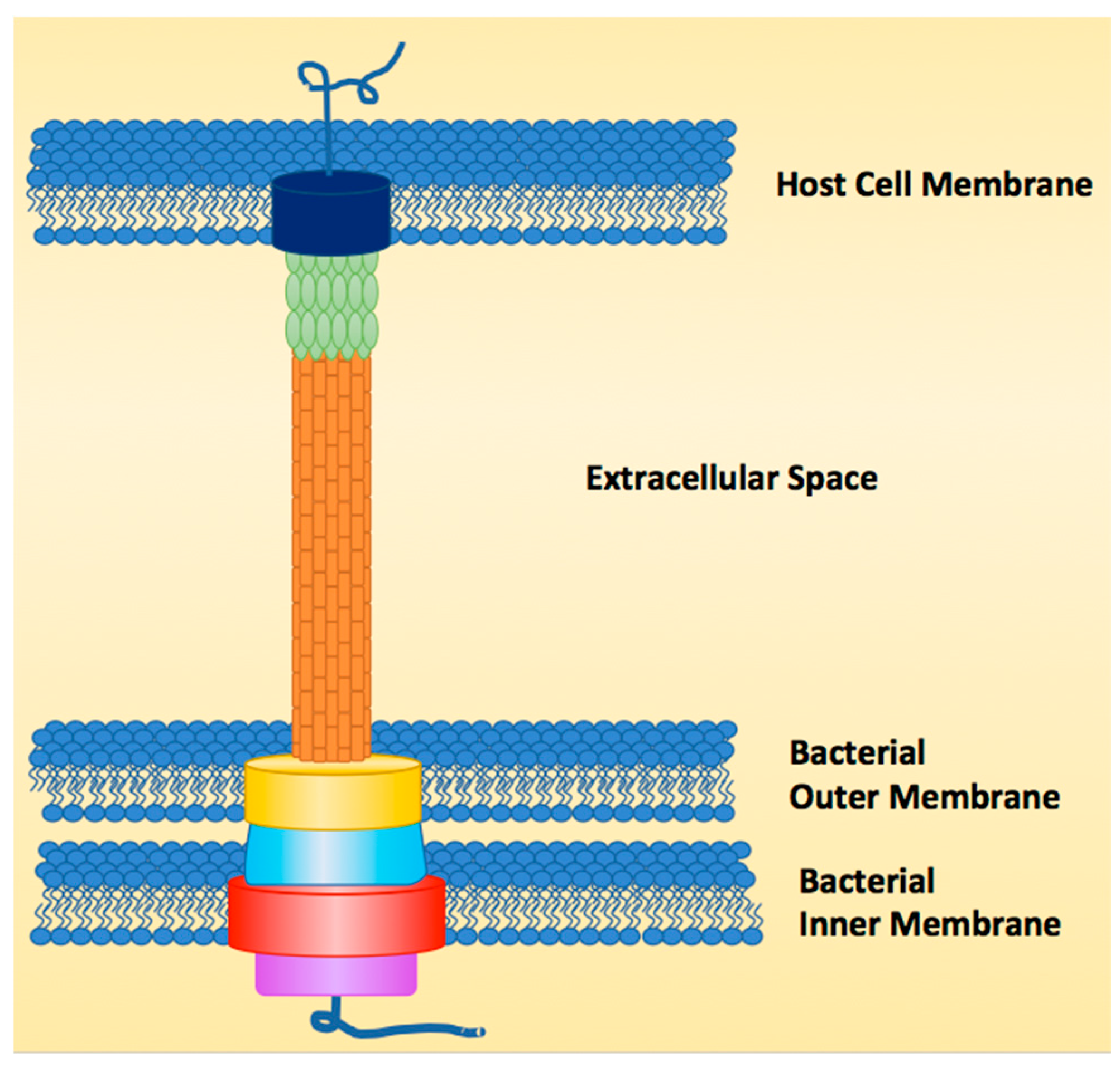


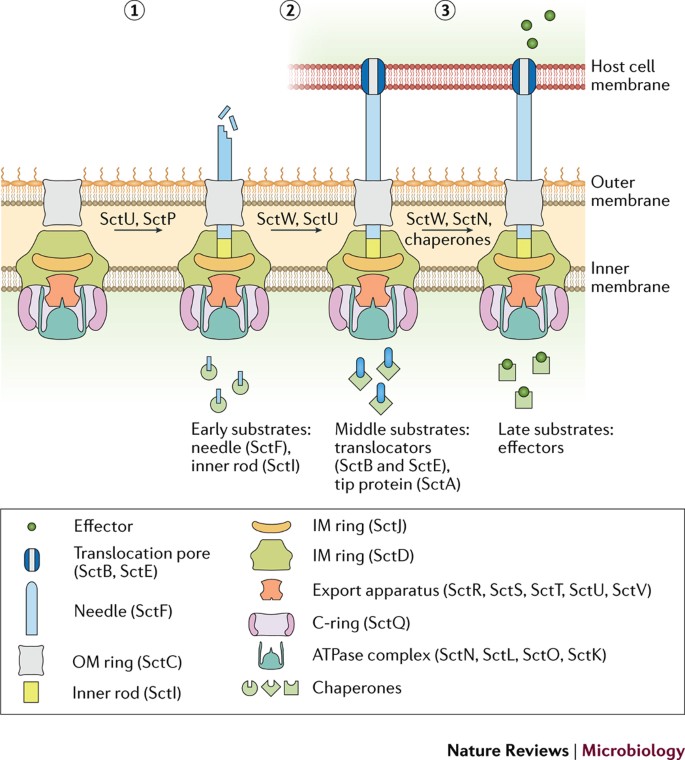








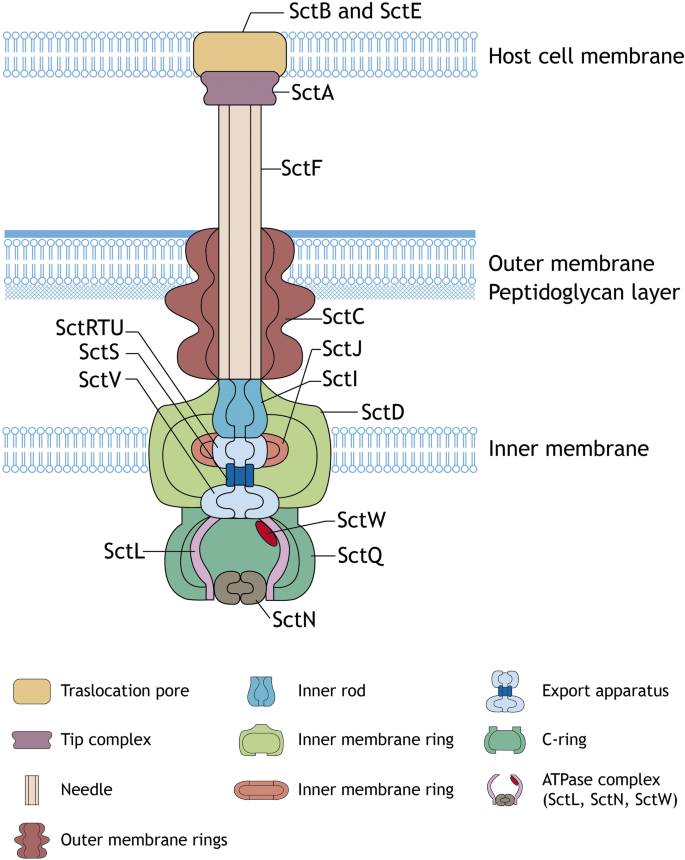

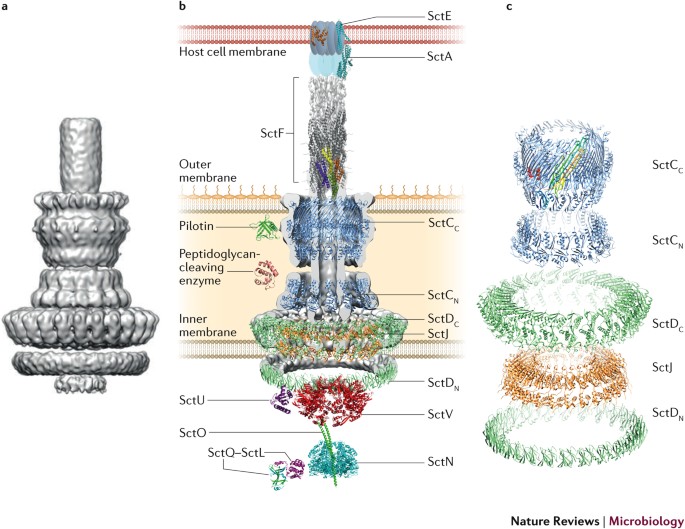

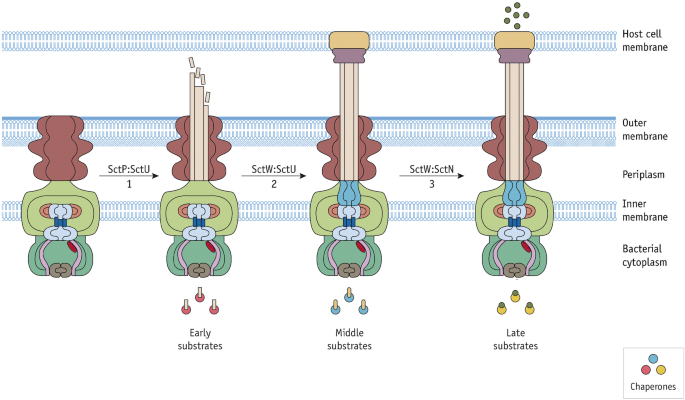






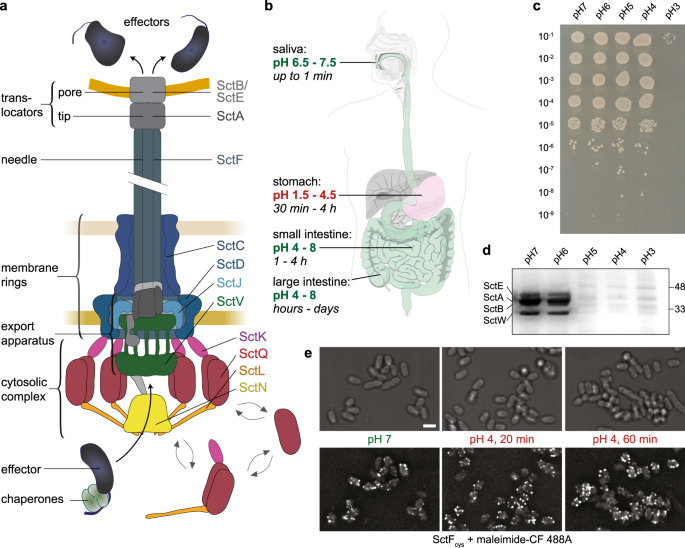









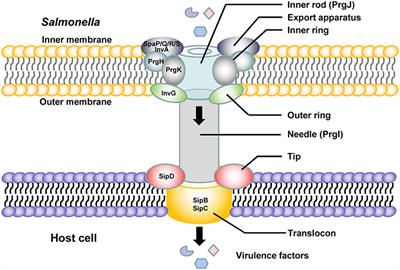
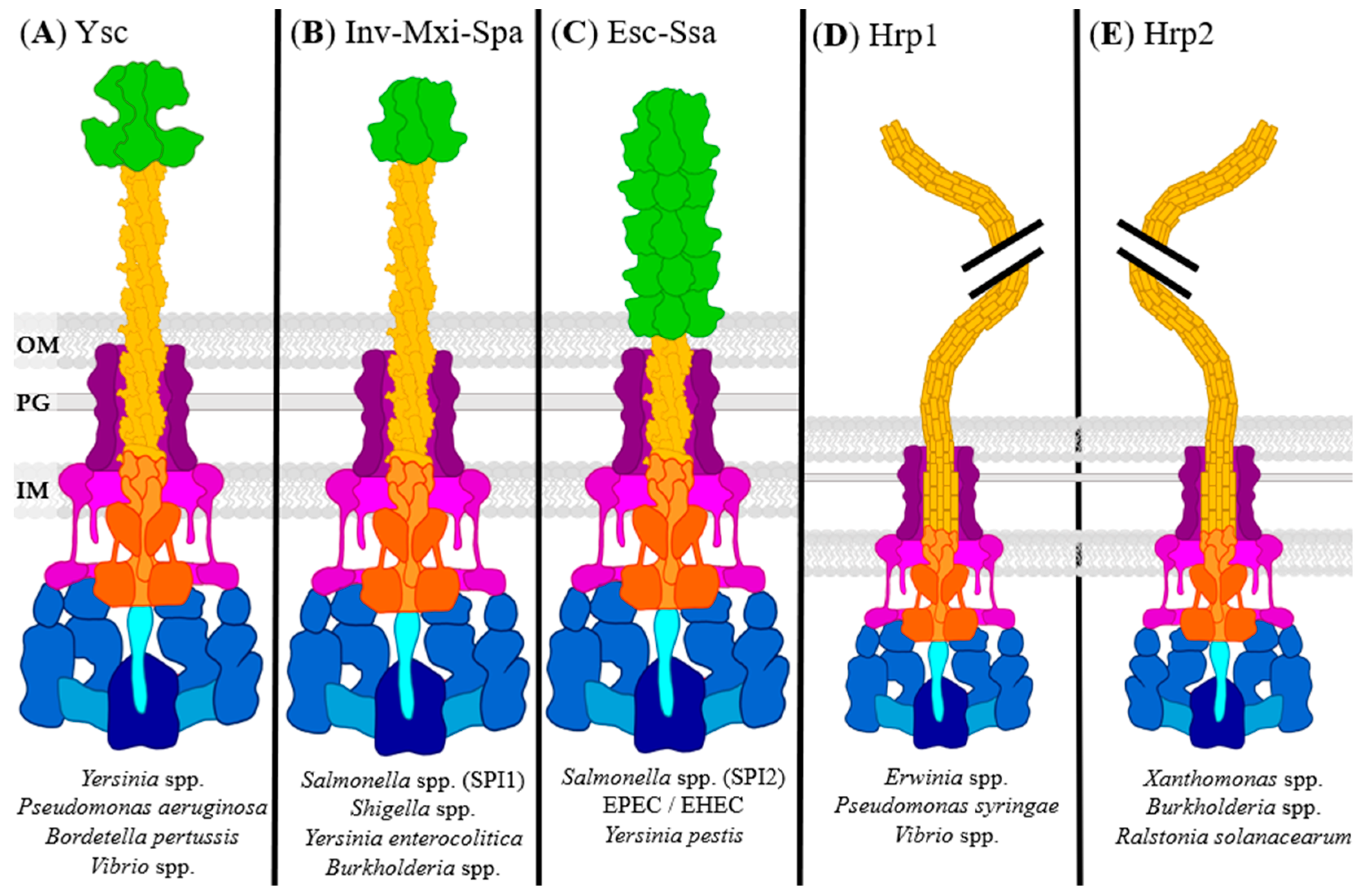
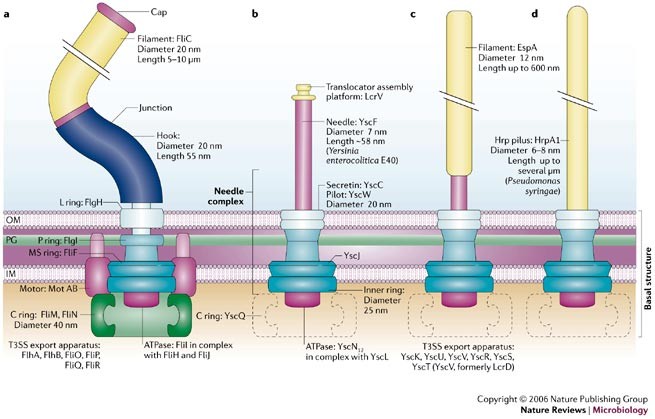


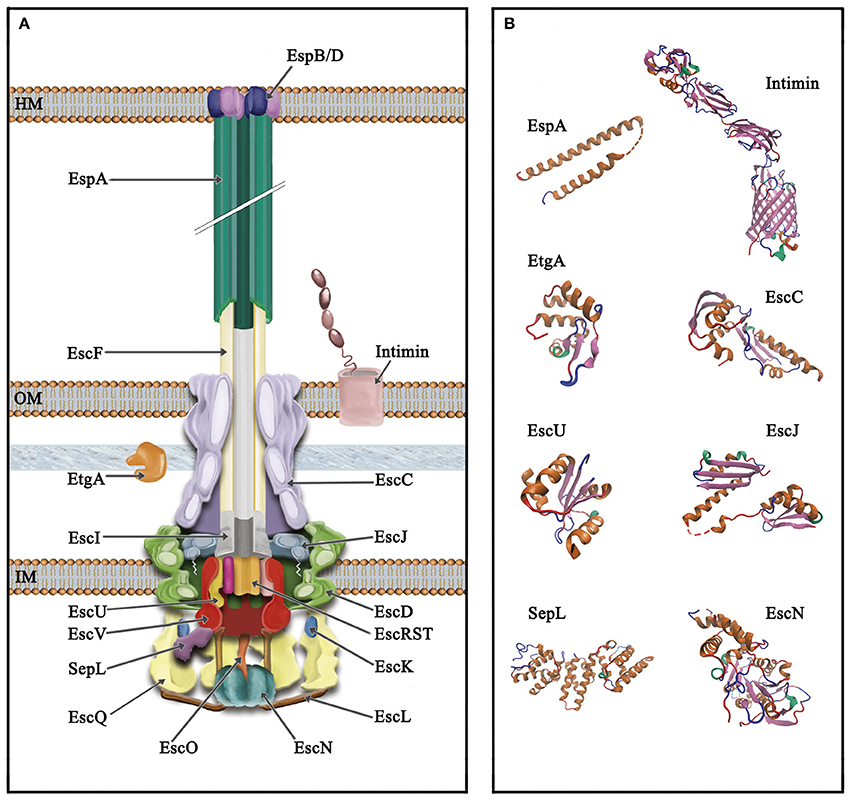






Post a Comment for "Salmonella Type 3 Secretion System"